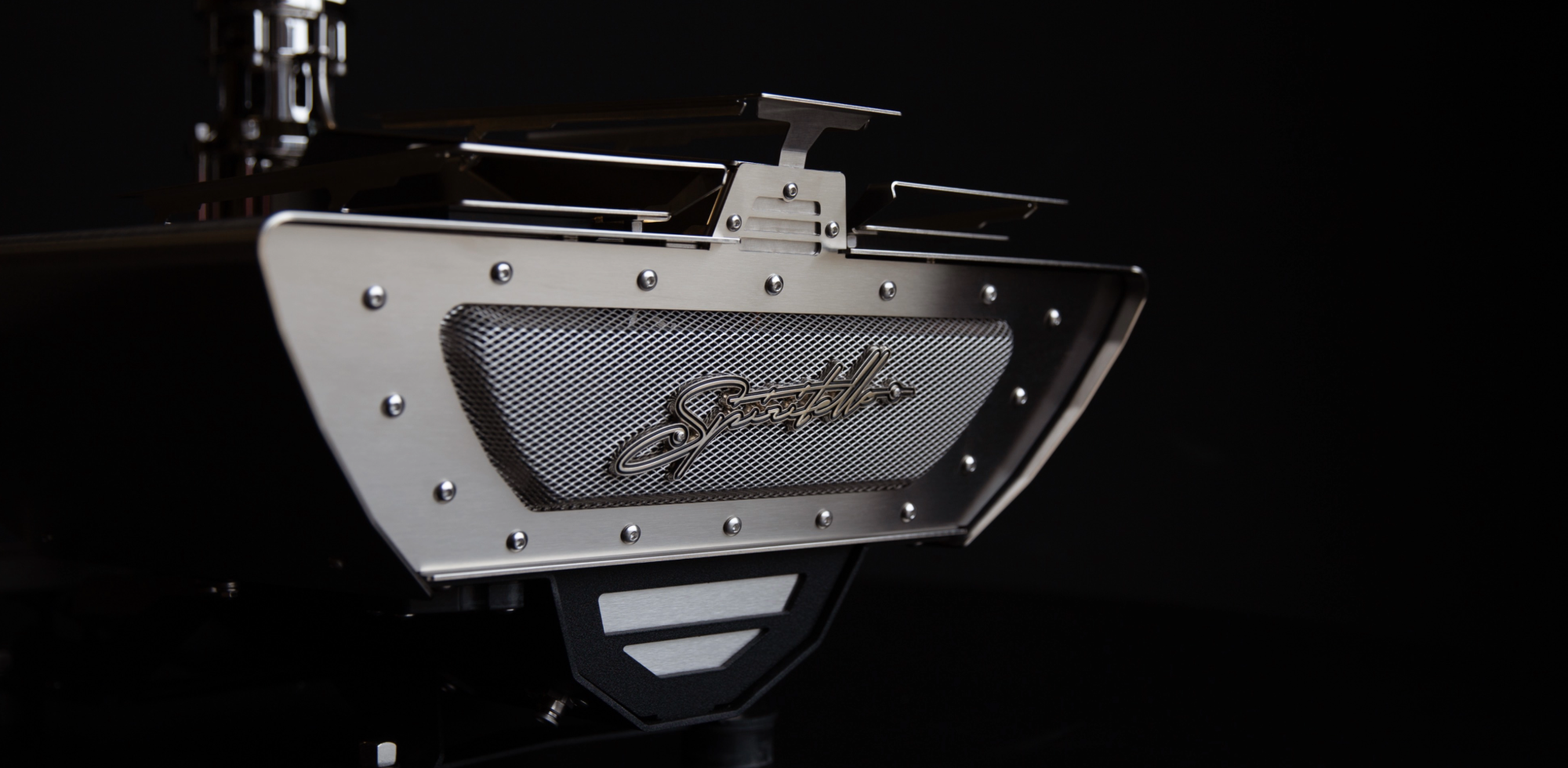Kees van der Westen designed his first espresso machine over 40 years ago. Since 1984, his company has built machines with a clear focus on design, quality, and innovation. Glancing through their catalogue of products, you could easily mistake the Netherlands-based brand's creations for works of modern art.
Last year, Acaia and Kees van der Westen created a connection for excellent, consistent espresso. Through our collaboration and technology, the Acaia Lunar and the Spiritello machine link to offer two auto-stop functions. Via the display on the Spiritello, you can activate the auto-stop by weight option and set your own target weights. You can discover more about the machine and pairing here.
We spoke with the head of marketing, Yvette van der Westen, about the company, our collaboration, and what's in store for the future of espresso machine design.
This interview has been edited for clarity.
First, please tell us about yourself and your role at Kees van der Westen.
My name is Yvette van der Westen. Kees is my dad, and together with my two sisters, Mylène & Dominique, we have been working in the company for almost nine years. This makes it very much a family company. It also allows Kees to refocus on his original passion: design and development. Both areas can be pushed to the background when you’re running a company day-to-day. Nowadays, he only has to focus on his passions, whilst my sisters and I run the company. I take care of distributor relationships and production planning. Dominique is part of the Research & Development team and oversees spare parts and admin when needed. Last but not least, Myléne takes care of purchasing and our social media presence.

How did Kees, the original owner, first become interested in building espresso machines?
That was a coincidence, really. When looking for a thesis project to finish his study of Industrial Design, he saw the espresso machine as a perfect candidate. It has a rich cultural history. It is an industrial product offering a broad spectrum of possibilities for design and development. The machine does have its complexities, yet it is still comprehensible. That made it interesting to him, as it could set him apart.
When the Kees team begins to design a new product, where do you start?
We first start with a list of all the features we would like to implement and offer. Then, many sketches are created to find one strong and striking overall shape. Kees usually has multiple shapes in his head as rough ideas for new machines. But it all comes together through implementing the features we want to have present. He likes to sketch on a 1:1 scale to get a feel for the measurements and the overall look. Once he is happy with the idea, we get a rough prototype made, just the frame and body, to get a feel of the look.

Has the approach to designing and building changed for the Kees team over the years?
Certainly, it has become much more of a team effort, with lots of tests and experiments to ensure the value of new ideas. In the past, a new model was started, and over the years, this has evolved continuously. Nowadays, a new model is much more complete and mature when production starts. This is how things go when growing from just a couple of people to a professionally run company.
Why did Kees choose Acaia for this integration?
We met the team with Rex (Acaia Co-founder) at HOST Milan 2023, and this was a pleasant first experience. It became clear we share a similar philosophy in regards to creating well-functioning products that are pleasant to the eye.
How have you integrated Acaia and our technology into your machines? How did the integrations come about, and how have you found working with us?
When we were first planning our collaboration with Acaia, we were developing the Spiritello, our one-group lever machine. Due to the timing, we decided to use this machine to first integrate the functionality with the Acaia scale. The Spiritello provides a big advantage of choices, especially as it is a lever machine. You can connect a Lunar scale to the machine and set your desired weight. The machine will then automatically stop the shot when the target weight is reached. It has been a real pleasure to work on this together with the Acaia team. Communication between our teams has been easy and quick.

Where do you see the path of espresso machine design heading?
I don't know about the outward design or looks, but there seems to be a growing trend to make the barista's life easier and more efficient. This is all good, of course. I just have my doubts about the reasons often mentioned. This includes ideas like anybody can be put behind the machine, training and knowledge are unnecessary, and lower costs. I hope this trend will not affect the traditionally people-friendly vibe in the specialty coffee world.

What's coming up in 2025 for Kees van der Westen?
Of course, we hope to further expand our collaboration with Acaia in 2025. Apart from that major goal, our focus is also on streamlining the production of the Spiritello, which only started in November 2024. We are obviously working on new developments, as we always do.
Thank you for the interview, Yvette!
See the connection in action at WOC Geneva this coming June 26-28, at booth 1253.


